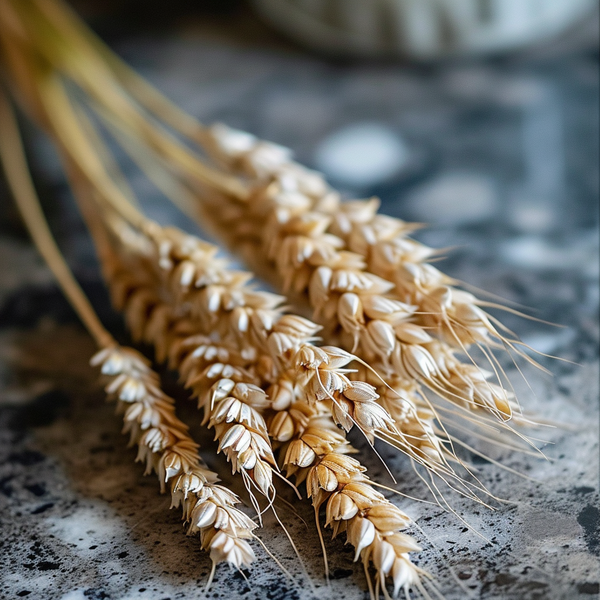
Wheat
Wheat is one of the most widely consumed grains globally and serves as a staple ingredient in many culinary traditions. It is incredibly versatile and is processed into various forms, each suited to different cooking and baking applications. Here are some common ways wheat is used in cooking:
Flour:
Baking: Wheat flour is the backbone of baking, used in bread, pastries, cakes, cookies, and more. The gluten content in wheat flour provides elasticity and strength to doughs, allowing them to rise and hold their shape.
Thickening Agent: Flour is used to thicken sauces, gravies, soups, and stews. It's often combined with fat in a roux, which serves as the base for many sauces and soups.
Whole Wheat Berries:
Whole wheat berries can be cooked and used similarly to other whole grains like rice or barley, in salads, soups, stews, or as a side dish. They offer a chewy texture and a nutty flavor.
Pasta:
Pasta is made from durum wheat semolina, a type of flour that's high in gluten and has a coarse texture. It's used in a wide variety of pasta shapes and dishes, from spaghetti to lasagna.
Bulgur:
Bulgur is a form of whole wheat that has been cleaned, parboiled, dried, and cracked. It's commonly used in Middle Eastern dishes like tabbouleh and pilafs, offering a quick-cooking, nutritious grain option.
Farina and Cream of Wheat:
Farina, made from the germ and endosperm of the wheat kernel, is used to make hot cereal dishes like Cream of Wheat, providing a smooth, comforting breakfast option.
Semolina:
Beyond pasta, semolina (from durum wheat) is used in making couscous and is also used in some baked goods and desserts, such as the Indian sweet, sooji halwa, or the Middle Eastern semolina cake, basbousa.
Bread and Flatbreads:
Wheat is the primary ingredient in many types of bread, including whole wheat, white, sourdough, and flatbreads like naan and pita. The type of wheat flour used can affect the bread's texture, flavor, and nutritional content.
Breadcrumbs and Coating:
Breadcrumbs made from wheat bread are used as a coating for fried foods, as a binding agent in dishes like meatballs and burgers, and as a topping for casseroles to add texture.
Seitan (Wheat Gluten):
Wheat gluten, also known as seitan, is used as a meat substitute in vegetarian and vegan cooking due to its chewy texture and ability to absorb flavors.
Beer and Brewing:
Wheat is used in brewing certain types of beer, particularly wheat beers and hefeweizens, contributing to their distinctive light, crisp character and cloudy appearance.
When using wheat in cooking, it's important to consider the specific variety and form of wheat, as this can significantly affect the dish's outcome in terms of texture, flavor, and nutritional value. Wheat's adaptability and the vast range of products derived from it make it a fundamental ingredient in countless recipes around the world.
Nutritional Information
calories
214
carbohydrates
45.93 g
fats
1.37 g
protein
8.09 g